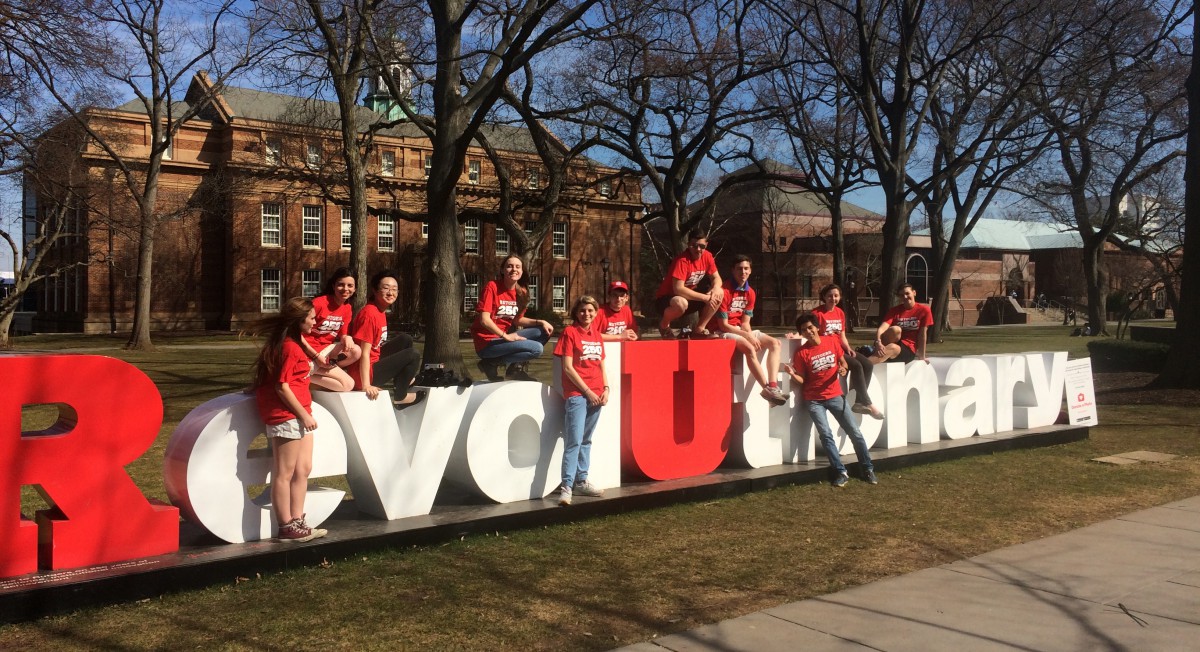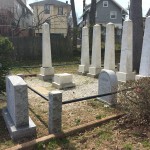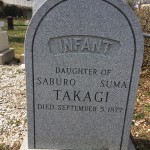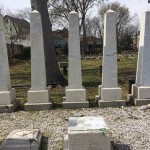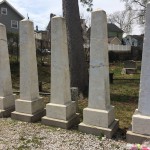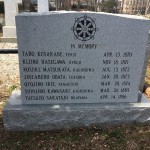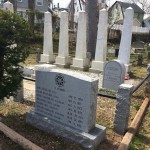Section 1
Andreas Kauderer, Kristine Claire Dela Cruz, Matthew Habel, Nicholas Petriello, Arjun Sreeram
The Dutch scope of influence was immense and spanned across the entire globe. Whether for religious reason or trade, it was in the best interest of the Dutch to maintain these connections. One such example is the relationship between the Dutch and the Japanese, with the presence of Japanese students at Rutgers emphasizing this connection through a scholarly notion that still exists in Rutgers today…the international student.
Our objects is located in the Willow Grove Cemetery in New Brunswick, behind the public library. In memory of Kusakabe Taro, one of the first Japanese students to attend Rutgers, the university bought the plot in Willow Grove to commemorate Taro’s legacy. His obelisk was placed there after Taro’s death from tuberculosis on April 12, 1870 at twenty-five. Subsequent obelisks and tombstones were installed on the same plot up until 1886. Rutgers originally bought the plot. In 1977, Dr. Yuko Ohtake made a donation of $2000 to restore the graves from deterioration. Additional donations were given by other citizens from Taro’s hometown of Fukui, Japan, a sister city of New Brunswick.
The gravesite is a small, square plot of land in Willow Grove Cemetery surrounded by railings on all four sides with its own mini entrance at the front. One headstone sits outside of the enclosure, which contains the names of the seven deceased Japanese students including Kusakabe Taro. At the other of the square plot stand five white pillars engraved with Japanese characters. In the middle, there is another tall pillar, a short square headstone, and a rounded headstone, which was for a deceased infant named Saburo Takagi.
This artifact tells a story from the global network of Dutch trade and settling, through which Kusakabe Taro was encouraged by the Dutch Church to travel to the United States in order to study at Rutgers. Kusakabe’s unfortunate death actually strengthened the connection between Rutgers and Fukui, as it was a motive to purchase a plot of land dedicated for his burial. Since this time, the gravesite has been the burial site for eight Japanese citizens who died in the area, and a yearly ceremony is held to remember these academic adventurers. We chose this monument both because of the powerful story it tells, and its role in present day Rutgers where it is actively commemorated.
WM Elliot Griffis described Kusakabe as a “‘passionate pilgrim’”, whose passion and hard work we can credit today with helping to start a great relationship with Japan. Nowadays the effects of the first steps of Kusakabe and others in America has led to other Universities diversifying, and a sister cities tie between New Brunswick and Fukui. However, for Rutgers personally, it has led to great relations with Universities in Japan, specifically in Fukui, of which former Rutgers president McCormick once said, “Rutgers cherishes its place in the special Sister City relationship between Fukui and New Brunswick … Fukui will always be a part of the history of Rutgers University. I hope that Rutgers will always be celebrated by the people of Fukui as well.”
Bibliography:
“Hidden New Jersey.” : The Japanese at Willow Grove Cemetery: Revealing New Jersey’s Role in Modernizing a Nation. N.p., n.d. Web. 10 Apr. 2016.
“Japanese Student.” Google Books. N.p., n.d. Web. 10 Apr. 2016.
“Rutgers Commemorates First Encounter between New Brunswick and Fukui, Japan.” Rutgers Commemorates First Encounter between New Brunswick and Fukui, Japan. N.p., n.d. Web. 10 Apr. 2016.
“Willow Grove Cemetery : History.” Willow Grove Cemetery : History. N.p., n.d. Web. 10 Apr. 2016.
